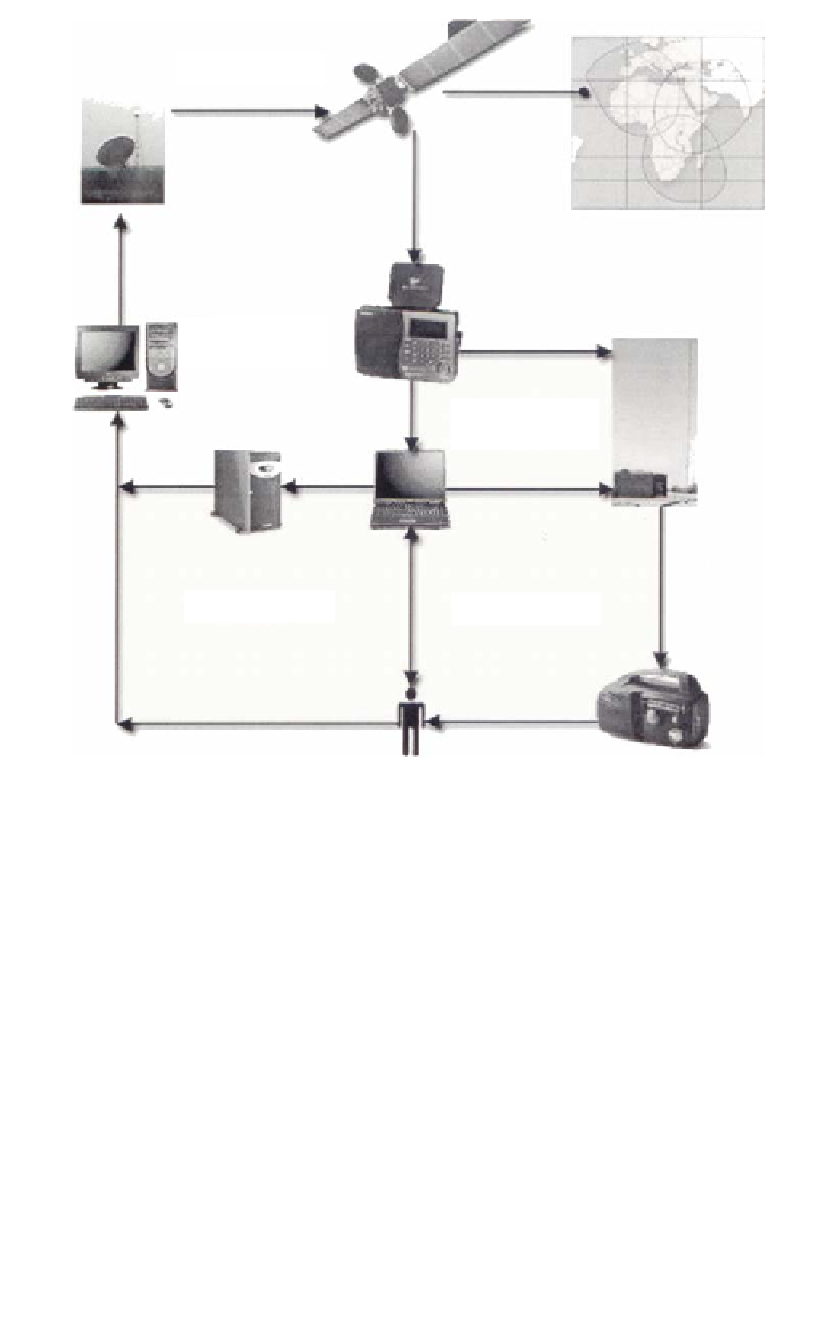Agriculture Reference
In-Depth Information
1
2
3
4
5
6
7
8
9
10
11
12
13
14
15
16
17
18
19
20
21
22
23
24
25
26
27
28
29
30
31
32
33
34
35
36
37
38
39
40
41
42
43
44
45
46
2) transmission
1) information
gathering
[279
3) reception &
interpretation
Line
——
-0.0
——
Norm
PgEn
4) dissemination
feedback
[279
Figure 21.1
The configuration of the Radio and Internet (RANET) system for communica-
tio
n of drought information across African rural communities.
explored as possible avenues for facilitating communication between ru-
ral RANET sites, their national meteorological services, and the broader
RANET system.
D
rought Monitoring Using RANET
Rural communities in Niger and Uganda have begun to use the RANET
system to improve the management of grazing and croplands, increase
agricultural production, enhance food security, and reduce vulnerability
to natural disasters (Shapley, 2001; Eskau, 2002; Thurow, 2002; Pratt
and Stewart, 2002). The greatest benefits are realized in field sites where
both the community FM radio and satellite multimedia link are function-












































Search WWH ::

Custom Search